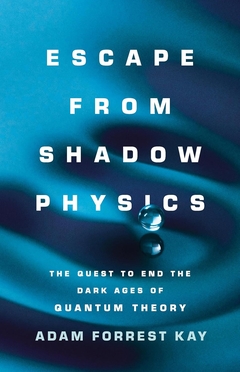It was Richard Feynman who proposed that particles like positrons — the antimatter equivalent of the electron — were actually normal particles traveling backward in time. Feynman would develop the idea with John Wheeler, and it continues to resonate with John Cramer (University of Washington), whose ‘transactional’ interpretation of quantum mechanics works with particle interactions that depend upon movement forward and backward in time. In December we looked at an experiment Cramer is developing to study this effect, which is best known as retrocausality.
So it’s nice to see that Patrick Barry’s fine article on Cramer’s work, and retrocausality in general, is available online from the San Francisco Chronicle. Originally written for New Scientist, the article is thus freed from that magazine’s firewall and available for general access. A snippet:
While Cramer last week prepared to start a series of experiments leading up to the big test of retrocausality, some researchers expect reverse causality will play an increasingly important role in our understanding of the universe. “I’m going with my gut here,” says Avshalom Elitzur, a physicist and philosopher at Bar-Ilan University in Israel, “but I believe that when we finally find the theory we’re all looking for, a theory that unifies quantum mechanics and relativity, it will involve retrocausality.”
Also intriguing is a sidebar on the fine-tuning of the physical constants that make life possible. Paul Davies [see below] opines that the universe might be able to tweak its essential parameters through a different kind of retrocausality. The thinking goes like this: If the laws of physics reside within the physical universe, they can only be as precise as the information content of the universe itself. But that content was smaller just after the Big Bang, perhaps offering an imprecision that later observers could influence. In other words, the universe is exquisitely shaped to produce life because life made it so.
Says Davies, “It offends our common-sense view of the world, but there’s nothing to prevent causal influences from going both ways in time.” Fascinating stuff, and the Barry article is a good overview for those of us who find the physics involved completely mind-bending (was quantum mechanics ever anything else?) Cramer’s variation on the classic ‘double-slit’ experiment, well described here, seems to offer the chance to witness an effect before its cause is in place. Needless to say, we’ll keep our eyes on this.
ADDENDUM: I originally referred to Paul Davies as being at Macquarie University, but found out subsequently that he left Australia last September (thanks to Gregory Benford for catching this). Davies is now at Arizona State; more on his work there in a few days.


Hi Paul
I was quite surprised by Paul Davies’ book “The Goldilocks Enigma” concluding with the retrocausation dodge as a possible best-of-two solutions to the puzzle of bio-friendly physical law, but it kind of makes sense that our perception of Time’s flow might be just one point-of-view and the Universe might have other ideas.
Even if Cramer can’t signal into the past his ideas might allow quantum connections to be used for ‘instantaneous’ communications (thus looking retro-chronal to Einsteinian observers in some situations.) Would be interesting if VR could be used to control machinery across the light-years, or if truly gigantic optical instruments could be networked allowing instant parallax measurements and the like – who knows what could be engineered if images at different locations could be combined in real time? There’s a pre-print discussing the optical illusions created by real super-luminal sources out in deep space…
http://arxiv.org/abs/astro-ph/0701634
…and the author of the paper means objects that really are going FTL not appearing like they do in a relativistic illusion.